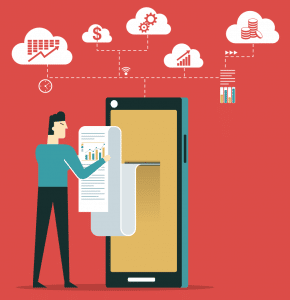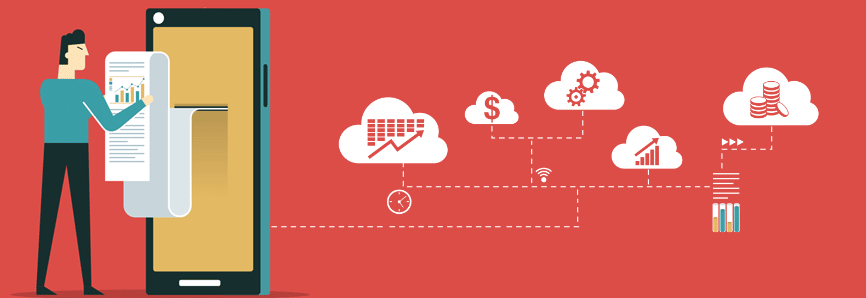COVID-19 forced businesses of every kind to automate, digitize, and adopt technologies to overcome the constraints it exerted on the global supply chain. The pandemic and its aftermath highlighted the need for manufacturers, retailers, and their suppliers to welcome electronic procurement (eProcurement) tools sooner rather than later in their efforts to scale their businesses and leverage efficiencies. eProcurement applications harness cloud capabilities to enable more formalized sourcing, tracking, receipt, and payment of the things they need to run their companies. Businesses use eProcurement software to purchase spare parts, GNFR, consumables, and other maintenance, repair, and operations (MRO) supplies, as well as wholesale goods, components, and raw materials. The internet enables robotic process automation, centralized oversight, and streamlined workflow powered by an advanced electronic data interchange.
eProcurement: What It Is and What It Isn’t

eProcurement software connects customers and suppliers throughout the digital supply chain workflow. This reduces transaction costs, so purchasers receive the best possible price, delivery schedules, and other benefits, cutting operational costs and boosting revenue for vendors by generating greater volume and simplifying fulfillment tasks.
eProcurement tools accomplish the same objectives as traditional procurement methods. They just do it more quickly, efficiently, and with less human error. Automating manual processes allows finance and supply chain professionals to allocate more of their time to value-adding tasks rather than calculating price comparisons, filing paperwork, paging through catalogs, and processing invoices.
eProcurement solutions solve most of the disadvantages inherent in traditional procurement. In addition to serving as an escape hatch from “Excel hell,” eProcurement tools, unlike traditional pencil-and-paper processes, are not limited to finding needed supplies, obtaining the required quantities at the lowest cost, and receiving them before they are needed. Rather than settling for these tactical transactional successes, eProcurement focuses on creating a strategic supply chain. eProcurement is less vulnerable to the vagaries of the market than traditional procurement. It helps give companies the visibility and agility they need to respond to supply disruptions, capitalize on price breaks, and secure scarce parts and production inputs before the competition.
eProcurement Applications: Source-to-pay Solutions
eProcurement tools can be used throughout the vendor-management procedure:
- Supplier evaluation – Companies can generate eProcurement savings by benchmarking existing suppliers and locating and categorizing potential new sources. Established suppliers can be graded on performance, price, and other variables to create a standard to which new supply partners can be measured.
- Vendor selection – eProcurement applications can assist in identifying redundant sources of critical supplies, diversify the vendor base, and replace unresponsive or now-unsuitable suppliers. Working with a supply-chain-as-a-service company gives businesses a shortcut to building the supplier relationships required to manage the process efficiently.
- Contract negotiation and administration – eProcurement software helps supply chain, asset, and facility managers build a stable of vendor contracts that mitigates risk. Once a responsible supplier is identified, terms that satisfy company-wide requirements – legal, regulatory, financial, and quality assurance – can be incorporated. eProcurement apps centralize contract terms enforcement and give organizations a handle on rogue purchasing.
- Data sharing – eProcurement facilitates the exchange of confidential operations information between the vendor and the client. Understanding each other’s processes aids in creating viable workflows.
- Ordering – Automating the MRO and component ordering saves time and minimizes the potential for error throughout the workflow. eProcurement savings extend from purchase order creation, validation, and funding to fulfillment and delivery.
- Payment – From invoice approval to transaction consummation, eProcurement applications manage millions of transactions seamlessly. ePayment expedites buying, offers secure remittance, and often provides the most cost-effective method for making international transactions. The system compiles and documents all activities, so managers can easily monitor purchases and assign them to the correct department or project.
eProcurement: What’s In It for You?
By tying into a network of suppliers’ exclusive, self-contained commerce platforms, eProcurement software enables manufacturers, retailers, and their supply chain partners to build and leverage vendor relationships. Establishing trust and familiarizing processes streamlines all interactions in the purchasing process: bidding, ordering, payments, fulfillment, and resolution. Time and money savings can be found throughout the chain of activities. eProcurement reduces labor and shortens lead time between needs identification and delivery. To reap the full benefits eProcurement applications can provide, however, companies must apply some understanding of vendor management and contracting, term compliance, rogue purchase control, and more. Often, partnering with a supply-chain-as-a-service company can ensure proper implementation and uncover savings that more than pay for the professional management of the eProcurement function. A partner experienced in eProcurement and with longstanding supplier relationships can perfect the process to achieve significant eProcurement savings in several areas:
- Fewer mistakes, less rework, and minimal manual intervention
- Active supply chain management with a single point of contact
- Wide selection, choice of vendors, and lower prices through competition
- Resource optimization, allocation, and mobilization
- Shorter lead times thanks to improved communications
- Inventory oversight by imposing limits, guidelines, and controls
- Full documentation throughout the eProcurement process
- Real-time transparency and retrospective analysis for better efficiency
- Integration among finance, purchasing, production, and other stakeholders
ZEUS Puts the Power of eProcurement in Your Hands
SDI’s Indirect spend and MRO supply chain optimization platform, ZEUS, gives you control of your eProcurement function. Based in the cloud, ZEUS, gives you visibility into tail-spend purchases, itemizes transactions, automates supplier relations, and takes the worry and hassle out of finding, purchasing, and receiving the parts you need to keep the lines moving.
ZEUS delivers end-to-end control over your FM spare parts and MRO supply chain. ZEUS users can customize its standard features including parametric search for supplies, punch-out to SDI supplier partners, recurring orders, order tracking, approvals process, and more. The cornerstone of the ZEUS platform, which includes modules for Advanced Data Analytics, eProcurement, Automation, Parts Warehouse and Storeroom Technology, and Intelligent Inventory Management Systems – is a custom eMarket marketplace facilitating direct purchases and guided buys for field and mobile technicians, giving users fast access to products in dozens of categories.
Ready to put SDI’s MRO supply chain expertise to work for you in implementing a streamlined eProcurement platform? Our eProcurement software maximizes your buying power and gives you access to our extensive supplier network. ZEUS will give you deep insights into your spend and guides you on the path to eProcurement savings. To find out more or to schedule a demonstration, contact SDI’s supply chain professionals now.



